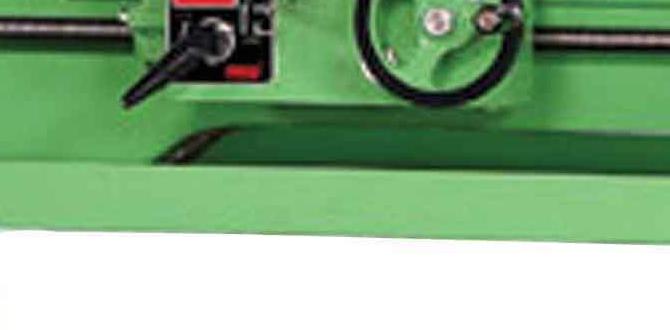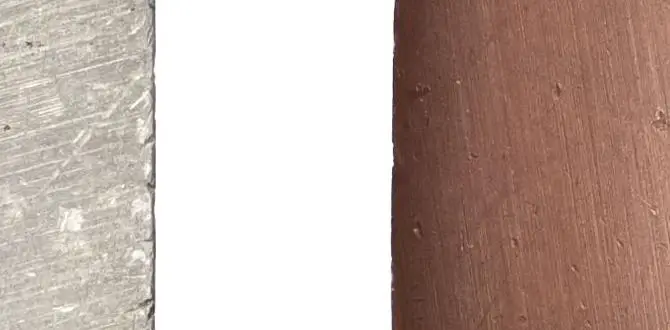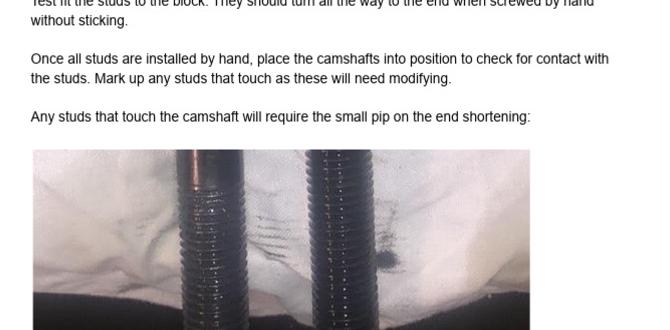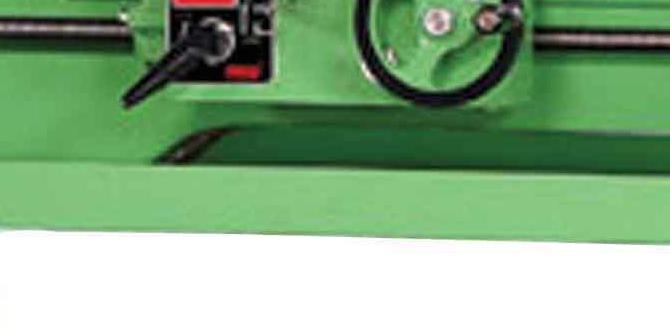A 1/8 inch carbide end mill is essential for MDF because its precision and durability allow for clean cuts, intricate details, and efficient material removal, making it ideal for hobbyist projects and professional work.
Working with Medium-Density Fiberboard (MDF) can sometimes feel like a puzzle. You want those crisp edges, those smooth pockets, and those detailed designs, but your tools seem to fight you every step of the way. This is where a simple yet incredibly effective tool comes into play: the 1/8 inch carbide end mill. If you’ve ever struggled to get clean cuts in MDF or found your bits wearing out too quickly, you’re not alone. Many beginner makers and woodworkers face these same challenges. But the good news is, with the right tool, MDF becomes a dream material to work with. This guide will show you exactly why a 1/8 inch carbide end mill is your indispensable partner for all things MDF, and how to use it to achieve fantastic results. We’ll cover everything from choosing the right one to keeping it in great shape.
The world of CNC machining and milling might seem daunting at first, especially when you’re just starting out. There’s a lot of jargon, a lot of different tools, and a lot to learn. But at its heart, it’s about using the right tool for the job, safely and effectively. Think of me, Daniel Bates, as your guide from Lathe Hub. I’ve spent my life with lathes, mills, and all sorts of tools, and my passion is making them accessible to everyone. I believe that with clear, simple steps, anyone can learn to create amazing things. This article is all about one specific, small but mighty tool: the 1/8 inch carbide end mill. If you’re looking to cut MDF cleanly, create precise details, or just get better results from your CNC router or milling machine, you’re in the right place. We’ll break down why this particular end mill is so special for MDF, how to pick one, and how to use it like a pro, even if you’ve never touched a milling machine before.
Why an 1/8 Inch Carbide End Mill is Perfect for MDF
MDF, or Medium-Density Fiberboard, is a popular material for makers, hobbyists, and even professionals. It’s affordable, consistent, and machines well – when you have the right tool. One of the biggest challenges with MDF is the fine dust it produces and its tendency to abrade cutting tools. This is where the unique properties of carbide and the size of an 1/8 inch end mill become crucial.
Understanding MDF and Its Machining Properties
MDF is made from wood fibers that have been combined with wax and resin binders under high temperature and pressure. This creates a dense, uniform panel that’s very stable and smooth. Unlike solid wood, it doesn’t have grains, which means you don’t have to worry about tear-out in different directions.
However, this density and the presence of binders mean MDF is surprisingly abrasive. Cheaper bits, especially those made from High-Speed Steel (HSS), will dull very quickly when cutting MDF. This leads to rough cuts, excessive heat, and a lot of frustration.
The Power of Carbide
Carbide, specifically Tungsten Carbide, is an extremely hard and dense material. It’s significantly harder and more wear-resistant than HSS. This means a carbide end mill will:
Last much longer: Even with the abrasive nature of MDF, carbide tools will hold their sharp edge for a considerable time.
Cut cleaner: A sharp carbide edge slices through MDF fibers cleanly, producing smooth surfaces and sharp details.
Handle higher speeds: Carbide can withstand the heat generated by faster cutting speeds, allowing for more efficient machining.
The Advantage of 1/8 Inch Size
So, why 1/8 inch specifically? This size offers a fantastic balance for MDF work:
Precision for Detail: A 1/8 inch end mill is small enough to create intricate designs, lettering, and fine features. It’s ideal for hobbyist projects, sign-making, model building, and detailed CNC routing.
Manageable Chip Load: For a typical hobbyist CNC router or a small milling machine, a 1/8 inch end mill provides a manageable chip load. This means it removes material in smaller, controlled chips. This is important for not overwhelming your machine, preventing tool breakage, and keeping the cut surface clean.
Affordability: Smaller bits are generally less expensive than larger ones, making them a cost-effective choice for frequent use.
Versatility: While not for hogging out large amounts of material, a 1/8 inch end mill is versatile enough for pocketing, profiling, contouring, and engraving on MDF.
When you combine tough carbide with the precision of a 1/8 inch diameter, you get a tool that’s exceptionally well-suited for the demands of MDF.
Choosing Your 1/8 Inch Carbide End Mill for MDF
Not all 1/8 inch carbide end mills are created equal. For MDF, there are a few key features to look for to ensure optimal performance and longevity.
Key Features to Consider
Number of Flutes: This refers to the number of cutting edges on the end mill.
2 Flutes: Generally preferred for softer materials like plastics and MDF. The fewer flutes create larger chip-gaps, allowing for better chip evacuation and reducing the risk of clogging, which is crucial with MDF dust. They also tend to cut more aggressively.
3-4 Flutes: These cut smoother and offer better surface finish on some materials, but for MDF, 2 flutes often provide a better balance of cutting performance and chip handling.
Coating: While standard carbide is good, a coating can enhance performance.
Uncoated: Perfectly acceptable for MDF, especially for hobbyist use.
ZrN (Zirconium Nitride) or TiB2 (Titanium Diboride): These coatings add extra lubricity and wear resistance. They can further extend tool life and improve surface finish, particularly if you’re doing a lot of high-volume work or pushing your machine.
Geometry:
Square End: The most common type. Offers a flat cutting surface.
Ball Nose: If you plan on doing 3D carving or contouring for smooth, radiused surfaces.
Up Helix vs. Down Helix (or Compression):
Up-cut: Flutes spiral upwards. They lift chips out of the cut. Good for clearing chips but can cause some fuzzing on the top surface of MDF if not set up correctly.
Down-cut: Flutes spiral downwards. They push chips down. This leaves a cleaner top surface but can pack chips at the bottom of a deep cut.
Compression bits: Combine up-cut and down-cut helix in one bit. They are excellent for making a clean cut on both the top and bottom surfaces of sheet materials like MDF and plywood. If you plan on doing a lot of 2D cutting where a clean top and bottom is critical, a 1/8 inch compression end mill is a fantastic, albeit often more expensive, choice.
Shank Diameter: For a 1/8 inch cutting diameter, you will most commonly find them with a 1/8 inch or 1/4 inch shank. A 1/4 inch shank is generally more rigid and less prone to vibration or breakage than a 1/8 inch shank, especially for longer tools or when taking deeper cuts.
Length: Standard length is usually sufficient for most MDF projects. If you need to cut deeper than the flute length, you’ll need to do it in multiple passes. For very deep features, specialized long-reach end mills might be required, but these are less common for typical 1/8 inch MDF work.
Recommended Types for MDF
For most general MDF cutting, a 2-flute, square-end, uncoated or ZrN-coated carbide end mill with a 1/4 inch shank is your go-to. If you’re aiming for spotless top and bottom edges on sheet goods without climb cutting or tape trickery, consider a dedicated 1/8 inch compression end mill.
When purchasing, look for reputable brands known for their cutting tools. A slightly higher initial cost for a quality tool will pay for itself in longevity and performance.
Setting Up Your Machine for Success
Using your 1/8 inch carbide end mill effectively requires more than just inserting it into your machine. Proper setup is key to achieving clean cuts, preventing tool breakage, and ensuring the longevity of both your tool and your machine.
Spindle Speed (RPM) and Feed Rate
These are the two most critical parameters for any cutting operation. Getting them right for MDF with a 1/8 inch end mill will make a world of difference.
Spindle Speed (RPM): This is how fast the tool spins. For MDF with a carbide bit, you generally want to run at a relatively high RPM. A good starting point for a 1/8 inch end mill is often between 18,000 and 24,000 RPM. Higher RPMs help contribute to a cleaner cut by allowing the tool to shear the material rather than rub against it.
Feed Rate: This is how fast the tool moves through the material. This is where there’s a lot of variation depending on your machine’s rigidity, the specific MDF density, and the depth of cut. A common mistake for beginners is feeding too slowly. This makes the tool rub, generates heat, and can lead to a fuzzy surface or even burn marks.
Starting Point: A good range to experiment with might be between 20 and 60 inches per minute (IPM) for a standard hobby CNC.
Chip Load: A more technical approach is to consider chip load. Chip load is the thickness of the material removed by each cutting edge per revolution. For soft materials like MDF with a 1/8 inch end mill, you might aim for a chip load between 0.002″ and 0.005. (Chip Load = Feed Rate / (RPM Number of Flutes)). So, if you feed at 40 IPM, with 18,000 RPM and 2 flutes: 40 / (18000 2) = ~0.0011″. This might be too low (rubbing). If you increase feed to 60 IPM: 60 / (18000 2) = ~0.0016″. Still a bit low. This is why you often hear about aggressive feed rates. Let’s recalculate: if your target chip load is 0.004″ and you’re running 2 flutes at 18,000 RPM, your feed rate should be: 0.004″ 18000 RPM 2 flutes = 144 IPM. This is quite high for many hobby machines to achieve cleanly. This illustrates why many beginners feel like they need to feed slowly – their machines can’t handle the necessary speed for a small chip load at high RPM.
The Sweet Spot: You’re looking for a feed rate that clears chips cleanly without stalling your spindle or making your machine rattle. Listen to the sound of the cut! A clean, consistent “shhhk” sound is good. A high-pitched whine or a chattering sound is bad.
Tip: Always perform test cuts on scrap material. Start conservatively and gradually increase your feed rate while keeping RPM constant until you find the sweet spot for your setup.
Depth of Cut (DOC)
MDF is not extremely hard, but trying to cut too deep in a single pass with a small 1/8 inch end mill will generate excessive heat and stress on the tool and machine.
Recommended DOC: For 1/8 inch end mills on MDF, a depth of cut between 0.125 inches (1/8″) and 0.25 inches (1/4″) is a good starting point. Some machines and higher-quality bits might handle more, but it’s better to be conservative.
Multiple Passes: If your project requires a deeper cut, simply make multiple passes. For instance, for a 0.5 inch deep pocket, you would make two 0.25 inch passes, or four 0.125 inch passes.
Tool Holding and Collets
Ensure your end mill is securely held in the collet and the collet is properly seated in the spindle. A loose end mill is a recipe for disaster, leading to runout, poor cut quality, and potential tool breakage.
Cleanliness: Make sure both the collet and the end mill shank are clean and free of dust or debris.
Proper Insertion: Insert the end mill into the collet, then insert the collet into the spindle before tightening the collet nut. For smaller collets (like an 1/8″), some users prefer to place the bit in the collet before inserting the collet into the spindle, then tighten.
Collet Size: Always use the correct size collet for your shank diameter. Using an adapter or an oversized collet can reduce accuracy and rigidity.
Practical Applications and Project Ideas
The 1/8 inch carbide end mill isn’t just a tool for MDF; it’s a gateway to creating a wide range of impressive projects. Its precision makes it ideal for detailed work that larger bits simply can’t achieve.
3D Carving and Engraving
This is where a ball-nose version of the 1/8 inch carbide end mill truly shines.
Bas-Relief: Create intricate carvings with varying depths to give images and designs a three-dimensional look.
Lithophanes: Carve intricate designs that become visible when backlit, perfect for personalized gifts.
Detailed Textures: Add fine textures to your projects, like wood grain effects or ornate patterns.
Personalized Gifts: Engrave names, monograms, or custom artwork onto boxes, signs, or decorative pieces.
CNC Hobbyist from BuildYourCNC.com often shares projects showcasing detailed carvings achievable with small end mills on MDF.
Intricate Inlays and Joinery
For projects requiring precise fits, a 1/8 inch bit is your friend.
V-Carving: Create sharp, defined lines for text and decorative elements.
Pocketing for Inlays: Precisely mill out areas for inlaying different materials (wood veneer, acrylic, or even different colors of MDF).
Small Dovetails and Box Joints: While often done with specialized bits on a router, a CNC with a 1/8 inch end mill can achieve these on a smaller scale for intricate boxes.
Sign Making and Lettering
Creating professional-looking signs with crisp lettering is a prime application.
Sharp Edges: Achieve very clean, sharp edges for letters, ensuring readability and a professional finish.
Small Lettering: Mill fine details and small text that would be impossible with larger bits.
Layered Effects: Cut out multiple layers of MDF to create signs with depth and dimension.
Model Making and Prototyping
For those who enjoy building scale models or prototyping designs, precision is paramount.
Scale Building Components: Mill out precise parts for architectural models, model railways, or dioramas.
Gadget Housings: Create custom enclosures for electronics projects.
Stencils: Mill out complex stencils for painting or other crafting applications.
Tips for Project Success
Material Hold-Down: Ensure your MDF is clamped down securely. Any movement will ruin your precise cuts. Vacuum tables are excellent for MDF.
Dust Collection: MDF dust is fine and can be a respiratory irritant. Use a good dust collection system for safety and a cleaner work environment. Proper dust extraction also helps keep the cutting area clear, leading to better finish.
Test Cuts: Always, always, always perform test cuts on scrap material to dial in your speeds and feeds before committing to your final piece.
These applications highlight just how versatile a seemingly simple tool like the 1/8 inch carbide end mill can be, especially when paired with the affordability and workability of MDF.
Optimizing Performance: Feeds, Speeds, and Advanced Techniques
Achieving truly exceptional results with your 1/8 inch carbide end mill on MDF involves moving beyond basic settings and understanding some finer points of cutting tool dynamics.
Chip Evacuation: The Key to Clean Cuts
As mentioned, MDF produces a lot of fine dust. If this dust isn’t removed from the cutting zone, it can re-cut, causing friction, heat, glazing, and a poor finish.
Air Blast/Coolant: For CNC routers, aiming a small air nozzle at the cutting area can help blow chips away. Some users employ a mist coolant, but for MDF, this can make the material swell and is generally not recommended unless specifically part of a specialized process.
Faster Feed Rate: As discussed, a faster feed rate helps push chips out of the flutes.
WOC (Width of Cut): When pocketing, don’t try to take a very wide bite. For a 1/8″ end mill, a width of cut that is significantly less than the diameter (e.g., 0.04″ to 0.1″) will often produce smaller, more manageable chips that are easier to clear. If your machine can handle it and you’re doing a large pocket, consider using a larger diameter end mill for roughing and then follow up with the 1/8″ bit for finishing.
* Spring Passes: After your main cutting passes, you can perform “spring passes” at a very light depth of cut (e.g., 0.004″ – 0.008″) and at your desired feed rate. These passes are meant to clean up any slight inaccuracies or fuzz left by the main cuts, using the rigidity of the





